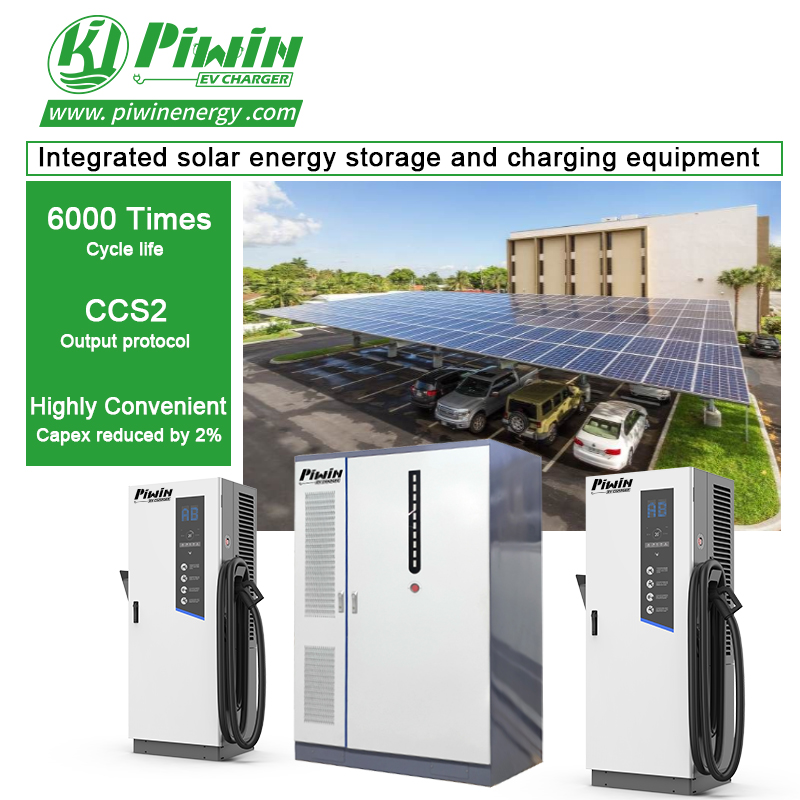
Products
Fast, Reliable, Everywhere

Solutions
Efficient, Innovative EV Charging Solutions.
News
We are committed to the innovation and application of EV charging.
Are you concerned about the environmental benefits of electric vehicles (EVs)?
Understanding the environmental impact of EV charging stations can help you see how they contribute to sustainable development.
In this article, we will explore how EV charging stations help the environment by reducing greenhouse gas emissions, improving air quality, and using clean energy.
Whether in cities or rural areas, the presence and operation of charging stations have a significant impact on environmental protection.

EV charging stations help reduce noise pollution mainly by supporting the use of quieter electric vehicles.
While the stations themselves don’t directly lower noise levels, the increase in electric vehicles they support leads to a notable reduction in city noise.
1.Reduction in Vehicle Noise: Electric vehicles are naturally quieter than traditional internal combustion engine (ICE) vehicles. Unlike ICE vehicles, electric vehicles produce minimal engine noise, significantly reducing road noise, especially in urban areas and at low speeds. A report from the European Environment Agency (EEA) notes that electric vehicles can cut road noise by up to 20 decibels (dB), leading to a noticeable drop in environmental noise levels (Source: EEA, “Noise Pollution and Electric Vehicles,” 2022). This reduction is especially beneficial in busy cities where noise pollution is a growing concern.
2.Impact on Urban Noise Levels: As the number of electric vehicles grows and the network of charging stations expands, the overall noise levels in cities decrease. Studies show that cities with more electric vehicles experience lower noise pollution, which improves the quality of life for residents. For example, a study in Los Angeles found that increasing the number of electric vehicles on the road could reduce citywide noise levels by around 5% (Source: University of California, “The Impact of Electric Vehicles on Urban Noise,” 2021).
3.Support for Quieter Urban Environments: By expanding EV charging infrastructure, governments and businesses promote the use of electric vehicles, which further enhances noise reduction. This is particularly important for cities aiming to achieve noise reduction goals and improve urban livability. As electric vehicles become more common, the reduction in noise pollution supports broader environmental and public health goals, making it a strong case for investing in EV charging infrastructure.
Although EV charging stations themselves do not directly reduce noise, they play a crucial role in supporting the adoption of quieter electric vehicles, leading to significant reductions in urban noise pollution.
EV charging stations are vital in alleviating air pollution by supporting the widespread use of zero-tailpipe-emission electric vehicles (EVs).
1.Reduction in Harmful Emissions: Unlike traditional internal combustion engine (ICE) vehicles, electric vehicles do not produce exhaust emissions. This means electric vehicles do not emit pollutants such as nitrogen oxides (NOx), particulate matter (PM), and volatile organic compounds (VOCs), which are major contributors to urban air pollution.
2.Improvement in Urban Air Quality: Increasing the number of electric vehicles on the road and leveraging the expanding network of EV charging stations can significantly improve urban air quality. For instance, a study in California found that using more electric vehicles could reduce nitrogen dioxide (NO2) and fine particulate matter (PM2.5) concentrations in busy city traffic areas by up to 30% (Source: California Air Resources Board, “Electric Vehicles and Air Quality Improvement,” 2022).
3.Health Benefits: Improved air quality leads to a lower incidence of respiratory illnesses such as asthma and bronchitis, directly benefiting public health. The American Lung Association reports that reducing exposure to air pollutants can decrease hospital admissions and lower healthcare costs related to respiratory and cardiovascular diseases (Source: American Lung Association, “Health Benefits of Reducing Air Pollution,” 2021).

Smart charging solutions are essential for making EV charging networks more sustainable and eco-friendly. These technologies optimize energy use, reduce grid stress, and better integrate renewable energy.
1.Reducing Peak Demand Through Demand Response: Demand response programs adjust the power consumption of EV chargers based on grid conditions. During peak times, these programs can delay or reduce charging, easing grid stress and lowering the need for additional, often less environmentally friendly, power generation. Research by the Electric Power Research Institute (EPRI) indicates that demand response programs can cut peak loads by up to 10% and reduce reliance on fossil-fuel-based peaking power plants.
2.Enhanced Integration of Renewable Energy: Smart charging solutions facilitate the integration of renewable energy sources such as solar and wind power into EV charging infrastructure. For example, Vehicle-to-Grid (V2G) technology allows electric vehicles to return stored energy to the grid during high-demand periods, supporting grid stability and increasing the use of intermittent renewable energy. According to the National Renewable Energy Laboratory (NREL), V2G systems can boost renewable energy use by up to 25% and reduce dependence on fossil fuels.
A prime example of effective smart charging is Amsterdam, which has incorporated smart charging solutions into its EV infrastructure. The city combines smart grids, demand response, and renewable energy integration to manage its growing fleet of electric vehicles. This approach has cut peak grid demand by 20% and significantly increased the use of renewable energy for EV charging (Source: Amsterdam Smart Charging Initiative, 2022).
Integrating renewable energy into EV charging stations offers substantial environmental benefits by reducing reliance on fossil fuels, cutting carbon emissions, and promoting sustainable energy practices.
1.Reduction in Carbon Emissions: Using renewable energy sources like solar, wind, and hydropower for EV charging drastically cuts carbon dioxide (CO2) emissions compared to fossil fuel-based power. For example, solar-powered EV charging stations can reduce carbon emissions by up to 50% compared to stations using traditional grid power. According to a report by the International Renewable Energy Agency (IRENA), switching to renewable energy for EV charging can lower lifecycle CO2 emissions by 40-60% (Source: IRENA, “Renewable Energy and Electric Vehicles,” 2022).
2.Decreased Dependence on Fossil Fuels: Powering EV charging stations with renewable energy reduces the need for coal and natural gas generation. This shift not only lowers greenhouse gas emissions but also decreases other pollutants like sulfur dioxide (SO2) and nitrogen oxides (NOx). A study by the U.S. Department of Energy found that incorporating renewable energy into the power mix for EV charging can cut fossil fuel consumption by 25%.
3.Enhanced Energy Security: Relying on renewable energy for EV charging reduces dependence on imported fossil fuels, which can be subject to price fluctuations and supply disruptions. By using locally available renewable resources, countries and regions can improve their energy security and economic stability. For instance, countries like Germany and Denmark have successfully integrated high levels of renewable energy into their grids, showing increased energy resilience and reduced exposure to global fossil fuel market volatility (Source: German Federal Ministry for Economic Affairs and Energy, “Renewable Energy Integration,” 2022).
Battery storage systems at EV charging stations offer significant environmental benefits.They help reduce carbon emissions, enhance renewable energy integration, ease grid stress, and improve energy reliability. By integrating battery storage, EV charging infrastructure becomes more sustainable.
1.Reducing Grid Stress and Improving Efficiency: Battery storage systems buffer energy supply and demand, reducing grid stress. This lowers the need for additional peaking power plants, which are often less efficient and more polluting. Research by the Electric Power Research Institute (EPRI) shows that battery storage can reduce grid congestion and operational inefficiencies by up to 20%, leading to lower emissions and improved energy efficiency (Source: EPRI, “Battery Storage and Grid Efficiency,” 2022).
2.Supporting Energy Resilience and Reliability: Battery storage improves energy supply reliability by providing backup power during outages or high-demand periods. This enhances the resilience of the energy system and ensures that charging stations continue to operate even during disruptions. The resilience provided by battery storage helps maintain renewable energy efficiency and reduces the need for backup generators that run on fossil fuels. A report by the U.S. Department of Energy (DOE) highlights that battery storage systems can improve energy reliability and cut the need for fossil fuel-based backup power by up to 25% (Source: U.S. DOE, “Energy Storage and Reliability,” 2023).
Piwin’s Storage System Delivers Environmental Benefits:
Reduced Operating Costs: By optimizing operational processes, our system reduces energy costs by 10%, achieving high efficiency and economic benefits.

For government agencies, state-owned enterprises, and clients interested in EV charging infrastructure, partnering with a provider that emphasizes green energy solutions ensures that investments align with sustainability goals and offer long-term environmental benefits.
At Piwin , we are committed to advancing the future of energy with customized, innovative solutions to meet the growing demand for sustainable and efficient energy infrastructure.
